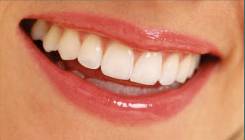The Material Zirconium Oxide
Zirconium oxide is a high tension ceramic material, which is used for high-tech applications, e.g. in the aerospace industry. It is a chemical compound of the rare element zirconium and oxygen. Its chemical formula is ZXrO 2. It is often referred to as zirconium oxide or zircon oxide.
This material is often referred to as ceramic steel because of its high tensile strength. Furthermore, the use of zirconium oxide virtually eliminates the risk of negative reactions in allergy-sufferers. The material is not an electrical conductor and therefore does it generate an electrical charge. It provides ideal protection against the unpleasant effects of heat and cold. Since the material is non-metallic, there is no danger of corrosion.
Application
 In addition to their use in dentistry, aluminum oxide and zirconium oxide have been in use as materials for hip replacements for over twenty years. These materials are fully biocompatible because they consist mainly of minerals which are also found in natural bone tissue. This means that they are the closest materials available to natural bone.
In addition to their use in dentistry, aluminum oxide and zirconium oxide have been in use as materials for hip replacements for over twenty years. These materials are fully biocompatible because they consist mainly of minerals which are also found in natural bone tissue. This means that they are the closest materials available to natural bone.
Safety and reliability
Clinical studies and material research prove that the use of zirconium oxide ensures safe, long-lasting and physically stable dental restorations.

- Low thermal conductivity
- No dark gum lines or discoloration of the gingivia
- Zirconium oxide has better translucence than metal. The natural effect of the dentures remains the same in a variety of lighting conditions, such as daylight or artificial light.
Advantages
CAD/CAM in dentistry
It is only in recent years that computer aided manufacturing has enabled this high-end material to be processed on such individual basis that it can also be used for the dental restorations. The automated processes now available guarantee consistently high standards of quality.
CAD
CAD stands for Computer Aided Design. This is n effect a kind of "electronic drawing board"
CAM
CAM stands for Computer Aided Manufacturing. In this case, this involves calculating the numerical data (cutting paths) required by a milling machine and passing this data on to the control system. The dental structures cut from a blank in a milling machine are then fired in a furnace to make the framework for the crown or bridge work.
Why do these dentures look so natural?
The ceramic substructure is coated with a so-called veneering ceramic which is painstakingly built up by the dental technician to match the appearance and shade of the individual patient’s natural teeth. The result is a full-ceramic tooth that only an expert can distinguish natural dentition. In order to protect the opposing teeth, the veneering ceramic is softer than the supporting substructure. The substructure itself would be too hard.
The veneering ceramic is supplied as a powder and is mixed with a special liquid and applied with a brush. It comes in a variety of colors. However, these are only intended as an aid to the dental technician, so that he or she knows which material is being used for each layer.
In order to lend an artificial tooth a natural appearance, it is necessary to use a number of different ceramic materials to provide various shades of white and differing degrees of brightness. When the layers of ceramic powder have been built up, the restoration is baked in a furnace and the colors disappear. The crown is then left with different degrees of brightness and shades of white and the overall effect is a denture that perfectly matches your natural teeth. The finished restoration is then fitted by your dentist.












